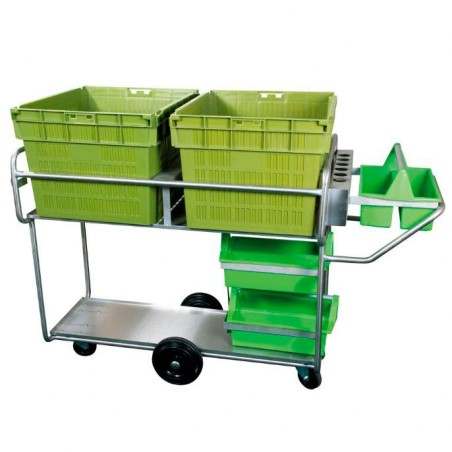Newborn piglets have a high risk of being crushed by the sow, and this risk implies welfare and economic consequences. The aim of this study was to investigate the importance of differentiating between low viable (secondary crushing losses) and viable crushed (primary crushing losses) piglets for the evaluation of risk factors for crushing related to characteristics of the sow, the litter, and the environment. Eleven Swiss farmers recorded sows’ production data (parity class, gestation length, numbers of live-born and stillborn piglets), data (age, sex, weight, cause of death, and signs of weakness) for every live-born piglet that died in the first week after birth (piglet loss), and ambient temperature. Piglet losses were assigned to five categorical events: piglet loss, subdivided into not crushed and crushed, the latter being further subdivided into low viable crushed and viable crushed. Piglets recorded by the farmer as crushed were assigned to the events low viable crushed and viable crushed based on the piglet’s body weight and signs of weakness (diseases, malformations). Data of 9,543 live-born piglets from 740 litters were eventually used to statistically model the hazard of dying at any given time in the first week after birth due to one of these events (mixed-effects Cox model). Five potential risk factors were analyzed as co-variates: parity class, gestation length, number of live-born piglets, number of stillborn piglets, and daily number of hours with ambient temperature >30°C.
We identified two risk factors for dying from the event viable crushed that were not identified as risk factors for low viable crushed, namely shorter gestation length and higher daily number of hours with ambient temperature > 30°C. Vice-versa, we identified additional live-born piglets in the litter as risk factor for low viable crushed, but not for viable crushed.

Our results show the importance of differentiating between low viable and viable crushed piglets for the interpretation of risk factors for crushing losses. Therefore, we suggest that for breeding purposes and in research, this differentiation should be made.
Spörri-Vontobel C, Simmler M, Wechsler B, Scriba MF. Risk factors differ for viable and low viable crushed piglets in free farrowing pens. Frontiers in Veterinary Science. 2023(10). https://www.frontiersin.org/articles/10.3389/fvets.2023.1172446




